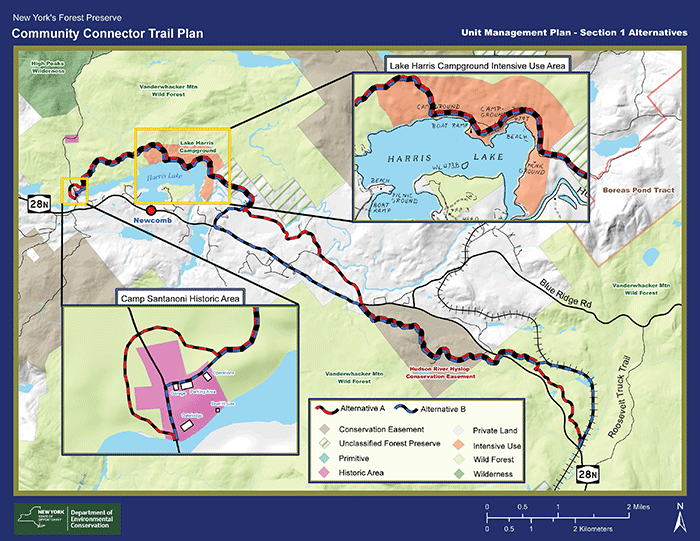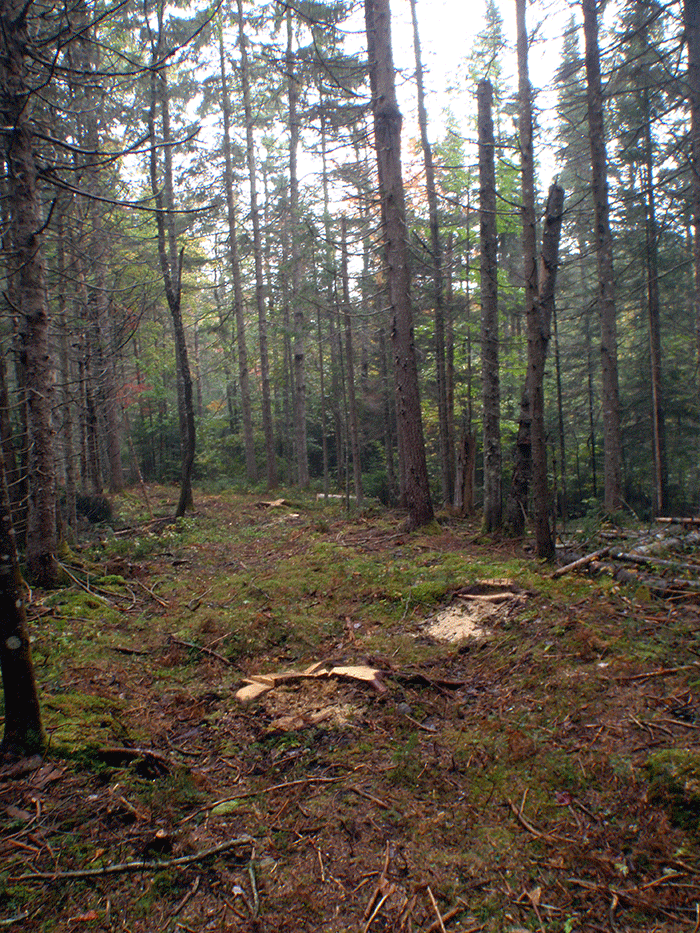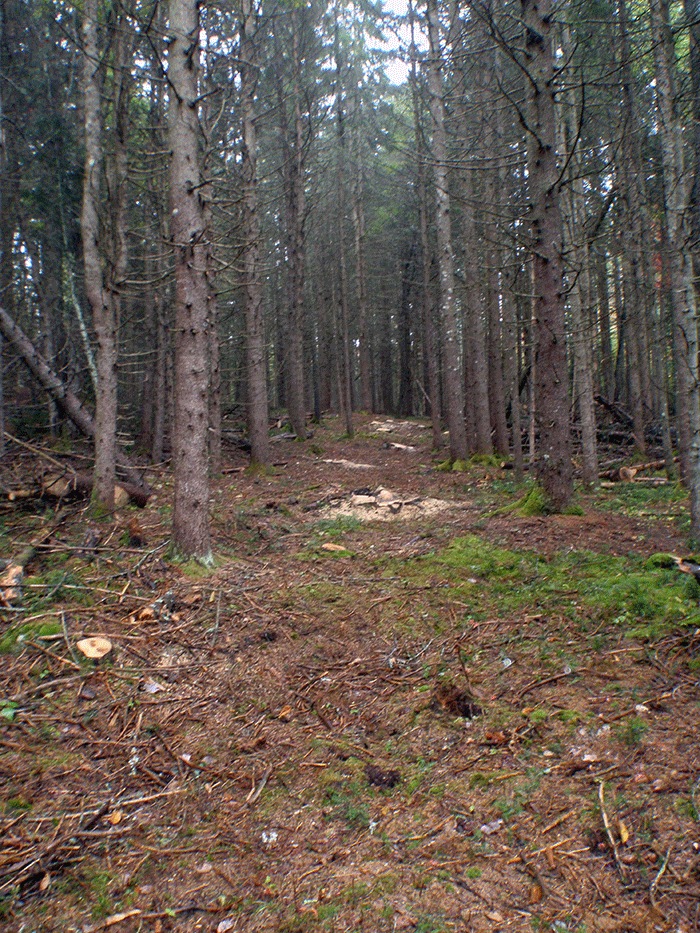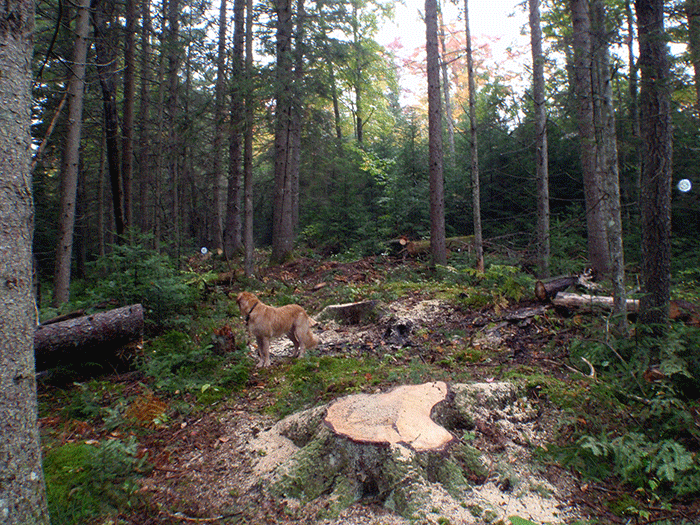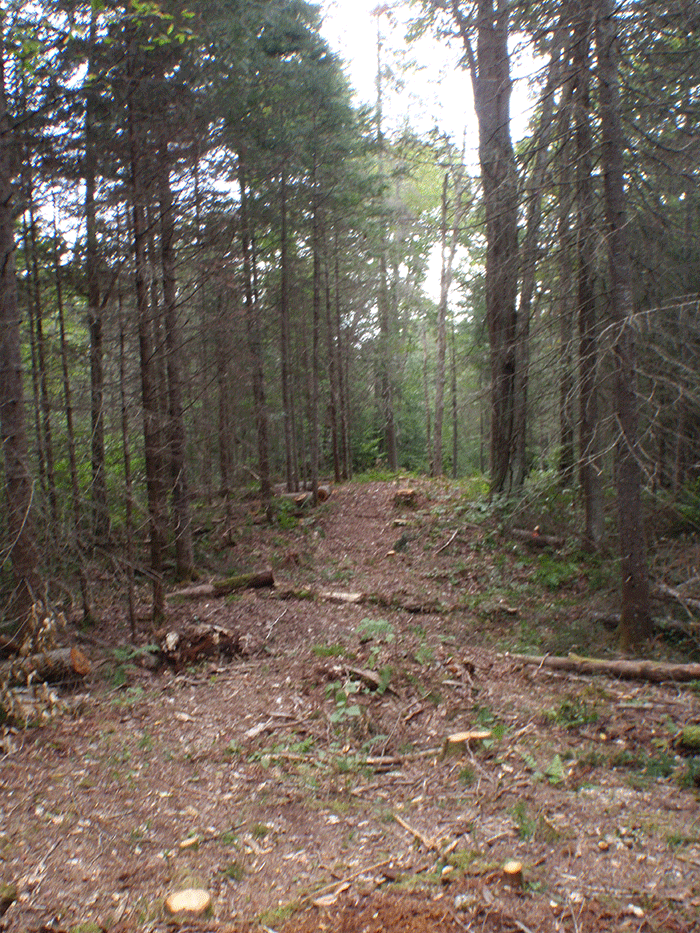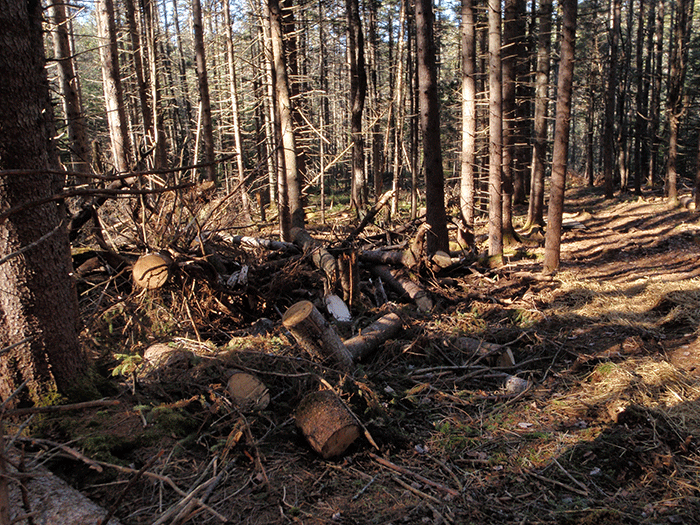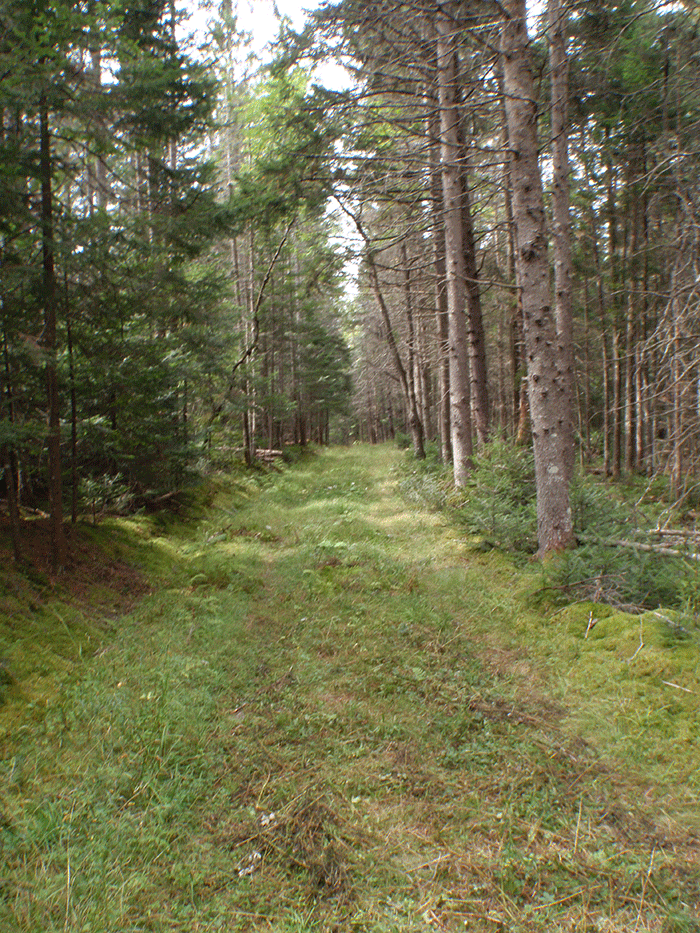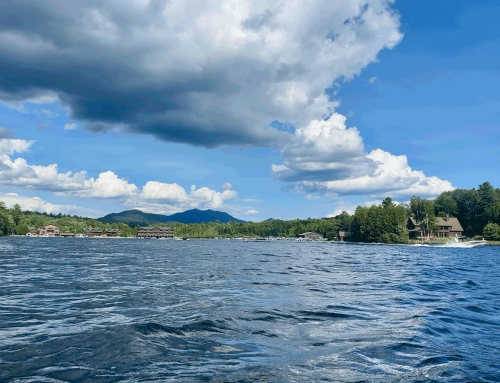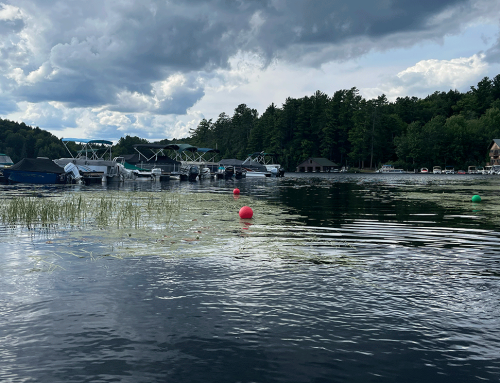This fall, Protect the Adirondacks conducted extensive field work on the new class II community connector snowmobile trail under construction from Newcomb to Minerva. This trail was approved by the Adirondack Park Agency (APA) in the summer of 2015 and will eventually run more than 10 miles through private lands and a small conservation easement tract, but mostly runs through Forest Preserve lands in the Vanderwhacker Mountain Wild Forest area.
The Department of Environmental Conservation (DEC) and crews from the Student Conservation Association have cut out nearly three miles of this trail. PROTECT field work documented that over 1,000 large trees with diameters of more than 3 inches DBH (diameter at breast height) were cut as well as several thousand more of smaller trees. In most parts of this trail there was no prior foot trail or old road. The majority of this trail was cut through wild, trailless forest.
This trail is part of a major new snowmobile trail that will connect Newcomb and Minerva. Tree cutting was followed by the start of trail grading with heavy machinery to level and flatten the trail. Rocks and stumps have started to be removed. Trail construction work has ended for season, but will continue in the spring.
This trail is part of the largest expansion of recreational motorized uses of the Forest Preserve currently underway by the Cuomo Administration. The motorizing of the Forest Preserve is a top policy for the Cuomo Administration in the Adirondack Park.
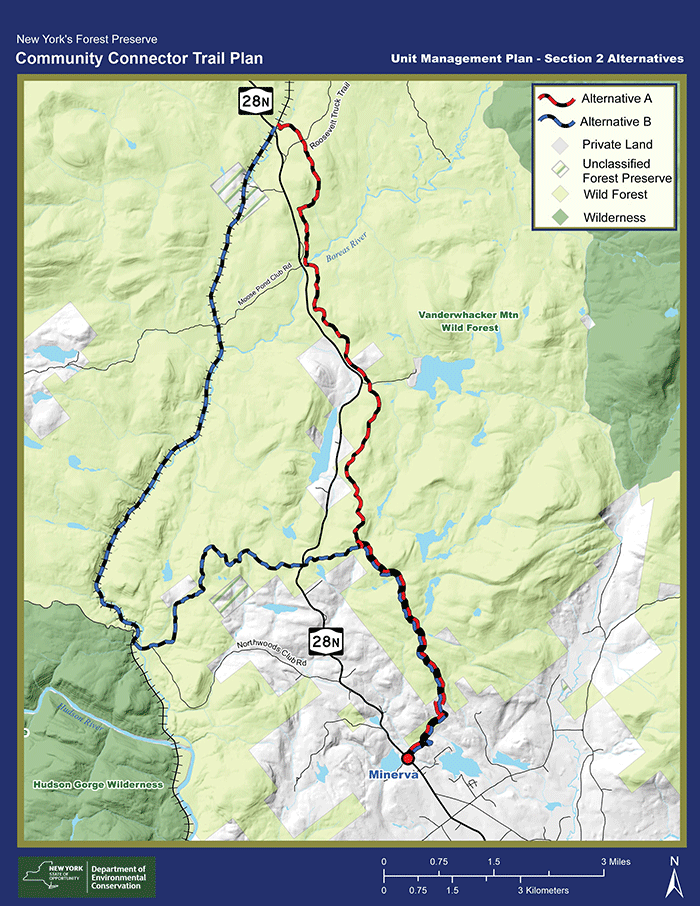
These two maps show the new 10-mile class II community connector trail from Newcomb to Minerva currently under construction by state agencies through the Vanderwhacker Mountain Wild Forest area of the Forest Preserve. The top map shows the route pictured below that runs from the Hyslop Conservation Easement tract to the Roosevelt Truck Trail. The map above shows the lower stretch of this trail from the Roosevelt Truck Trail to Minerva. The route under construction is Alternative A (Alternative B on this map will not be constructed). The rail line shown is a part of the Sanford Lake Rail Line that runs from North River to the Newcomb Mine.
PROTECT has long raised concerns about the construction of these road-like trails. Over 20 miles of these new trails were built in 2013-14 and another 10 miles was started in 2015. The Adirondack Park State Land Master Plan (APSLMP) defines a snowmobile trail as “a marked trail of essentially the same character as a foot trail” and mandates that it be “compatible with the wild forest character of an area.” A snowmobile trail “should be designed and located in a manner than will not adversely affect adjoining private landowners or the wild forest atmosphere….” These road-like class II community connector snowmobile trails simply do not have the character of a foot trail and violates both the wild forest character and the wild forest atmosphere of the area. PROTECT has consistently stated that class II community connector snowmobile trails do not conform to these three standards.
There is no way the new class II community connector snowmobile trail being cut through the Vanderwhacker Mountain Wild Forest area in Minerva bears any rational resemblance to something having the “character of a foot trail.” This class II community connector snowmobile trail has been cut out and next the trail surface will be graded, leveled, and flattened by a multi-ton excavator. Extensive bench cuts will be dug into side slopes that parallel the trail at many locations. This work will remove large rocks and all understory vegetation will be removed by grading. Oversized bridges will be built to support multi-ton groomers. In many places the grading, as we’ve already started to see, straw will be placed over the trail surface to help stabilize the area torn up by heavy machinery. These types of activities do not occur on foot trails.
A “foot trail” is where people walk single file. They step over roots and rocks. The trail surface is uneven and follows the terrain. There are scarcely any stumps of cut trees. Vegetation on the side often encroaches, and the trail is canopy covered. Steppingstones and split logs are commonly used to pass over streams and wet areas.
The pictures below show the extent of changes of the forest from construction of this trail.
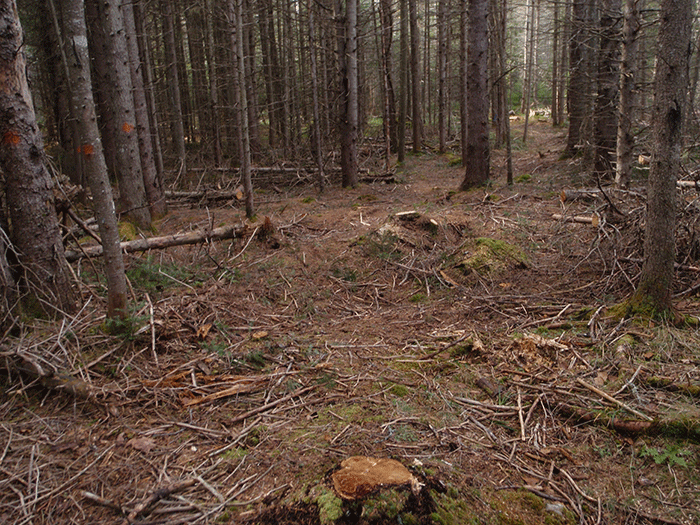
These pictures show where the trail corridor was recently cut. All trees within the 9-12 foot were cut down. This work will be followed by extensive grading and flattening of the trail surface.
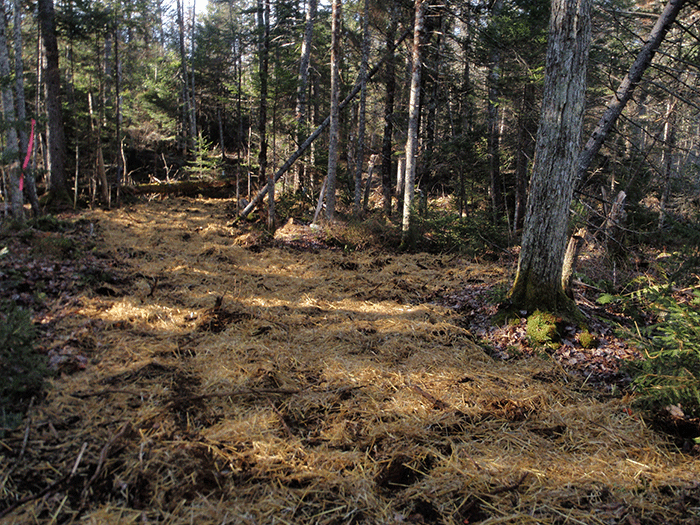
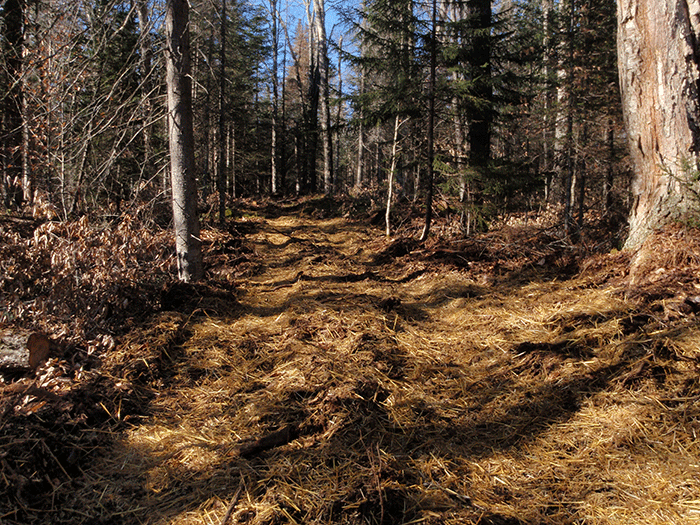
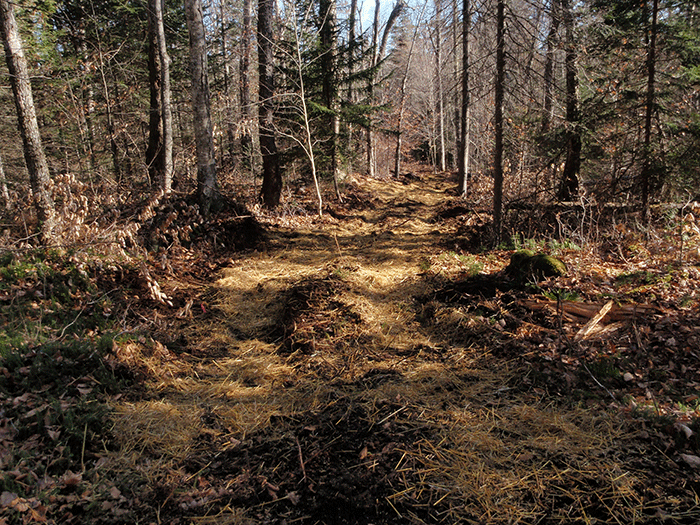
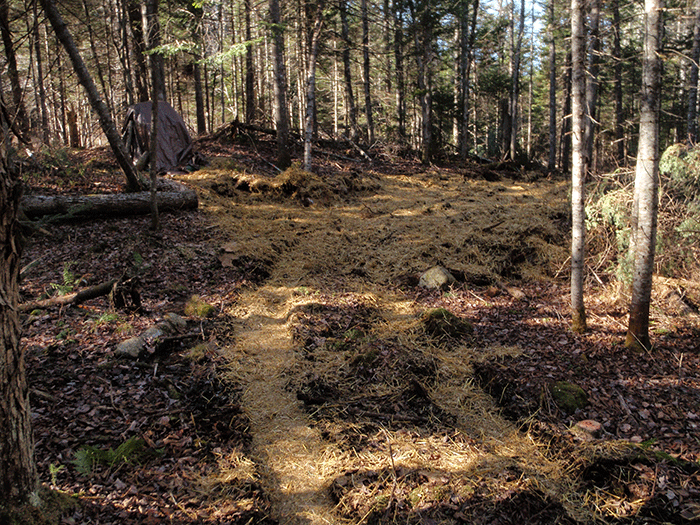
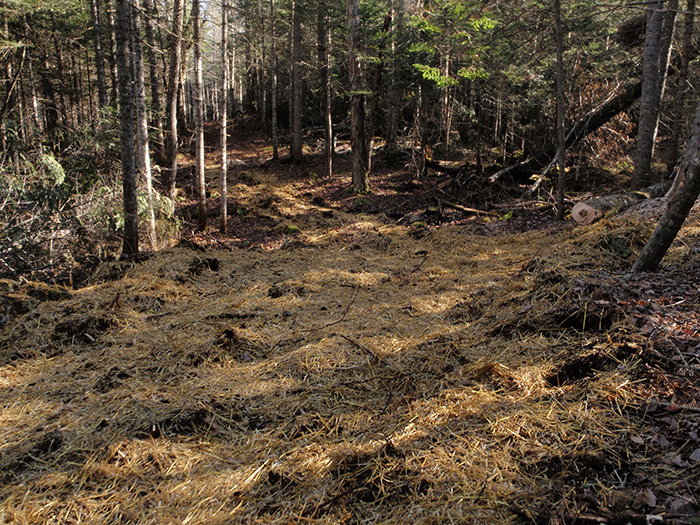
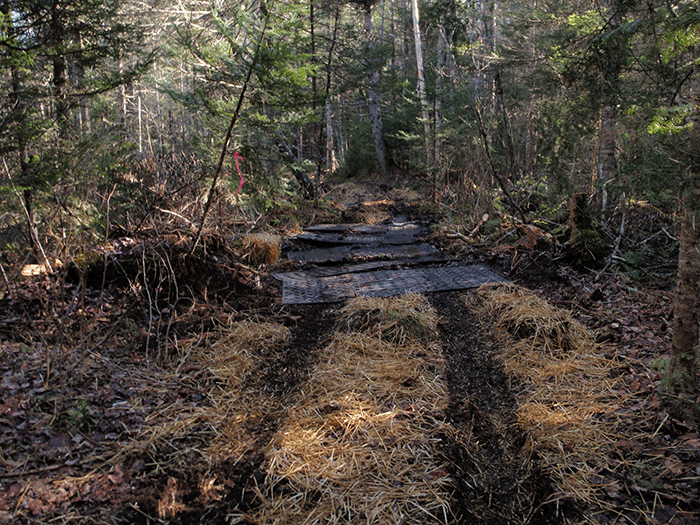
The pictures above show parts of the new Minerva snowmobile trail that have been heavily graded and flattened with heavy machinery. Official Forest Preserve policy states that grading should be “limited” but in most cases with these new class II community connector snowmobile trails, grading is undertaken over extensive lengths. Not only are these trails heavily graded but rocks and stumps are removed from the trail area and these materials as well as cut trees often line the trailsides. The tree cutting and extensive grading significantly change the trail area and the wild forest character and atmosphere in the surrounding forest. Straw has been placed on the trail surface due to the extensive disturbance of the trail area.
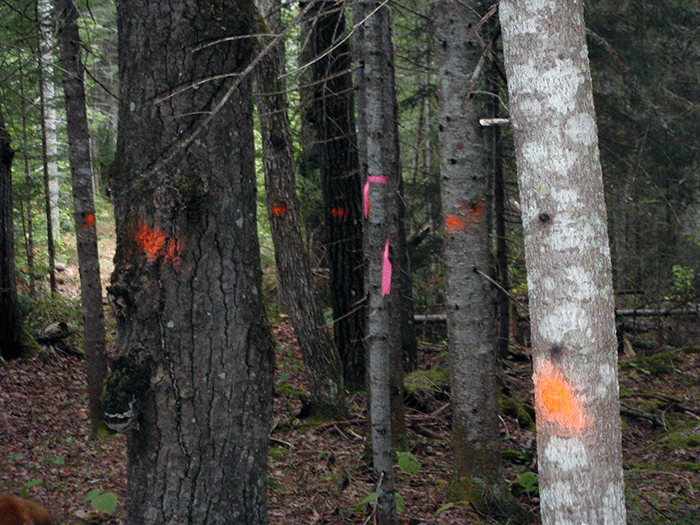
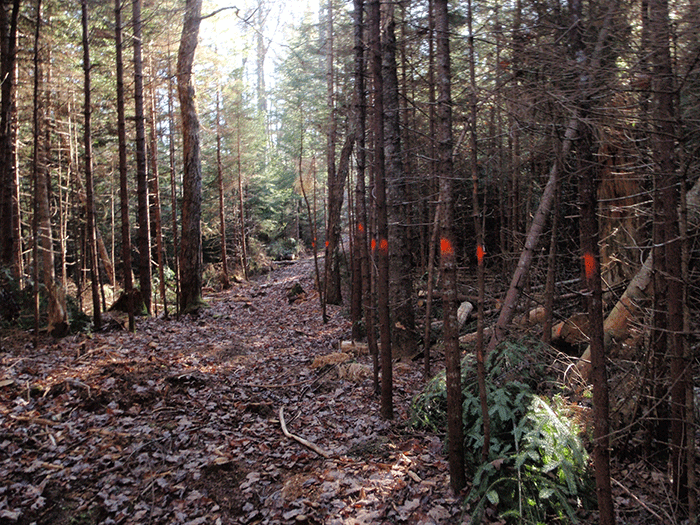
These two pictures show trees marked to be cut, The top picture shows a stretch of trail where trees were marked but the trail not yet cut out. The picture above shows a stretch of the trail where additional tree cutting will be undertaken.
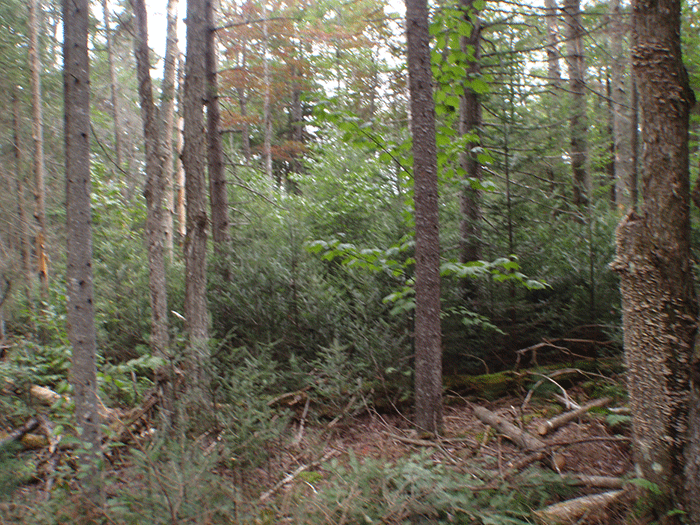
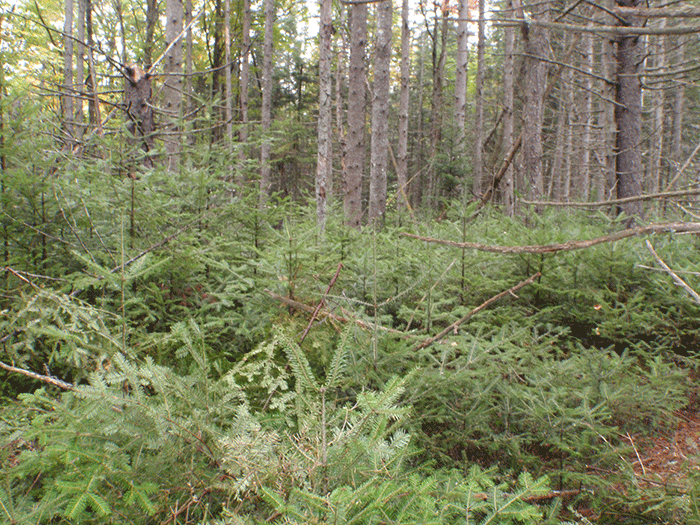
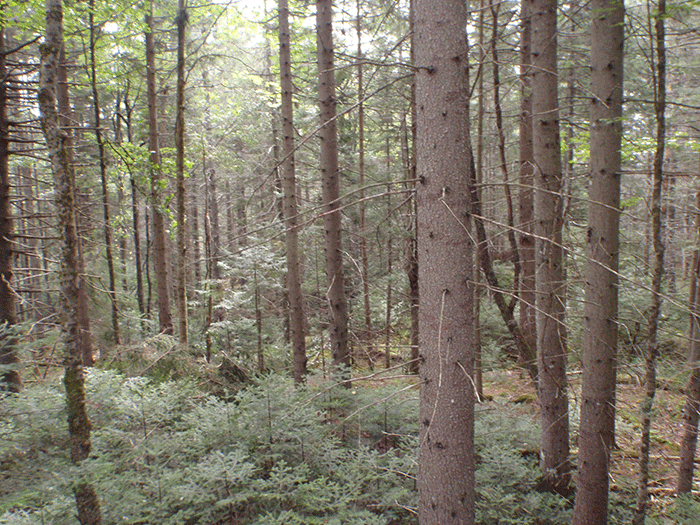
These three pictures were taken a various points along the trailside. These picture show the character of the forest before the trail was cut. Many large and small trees are cut the whole forest understory is also removed. These major class II community connector snowmobile trails have a major negative impact on the ecological integrity of the forest.

